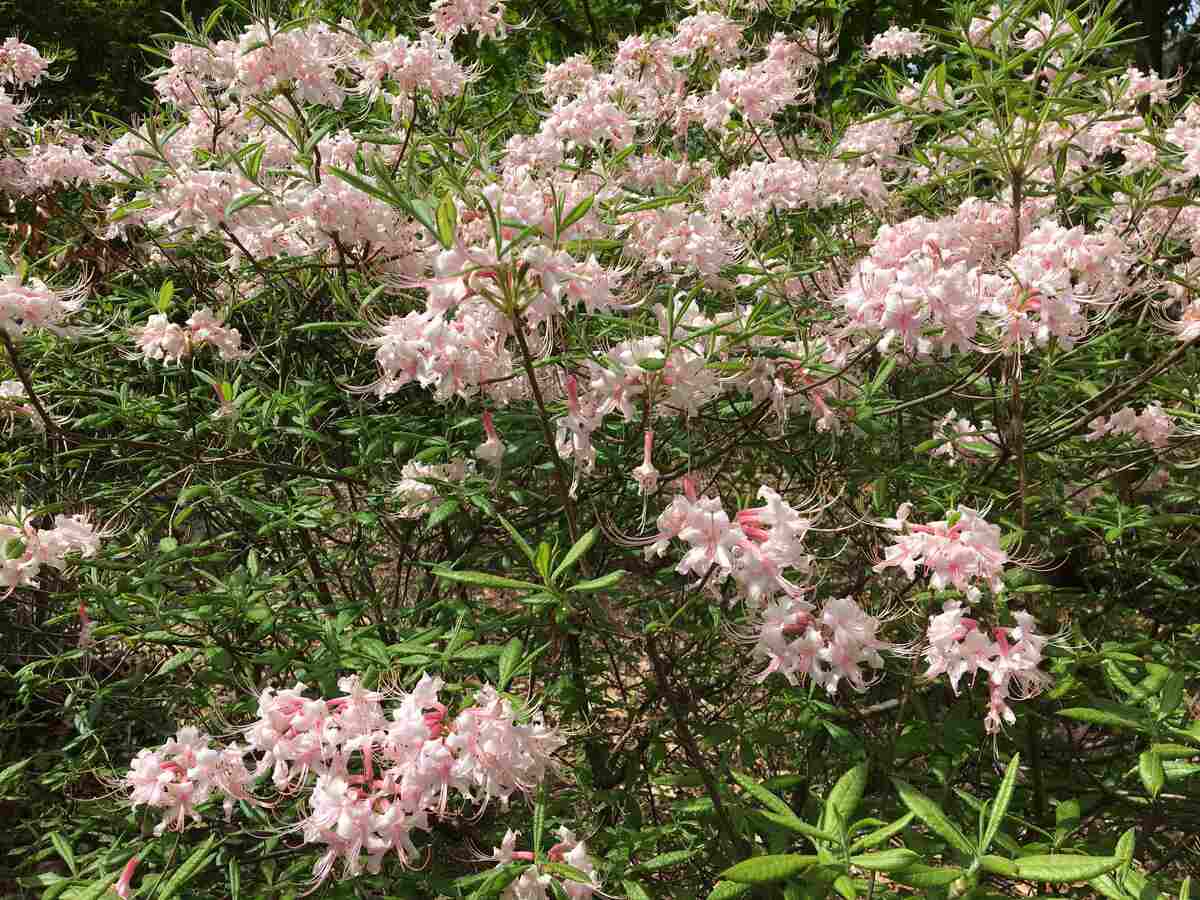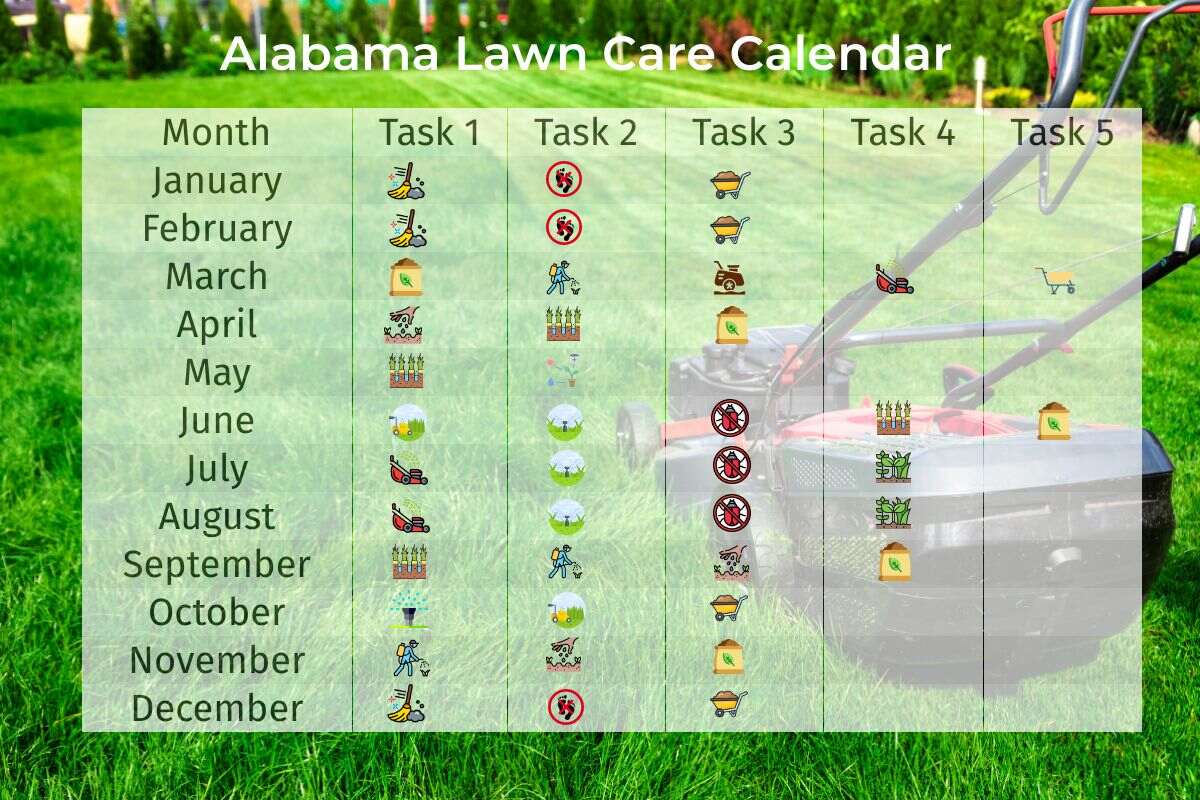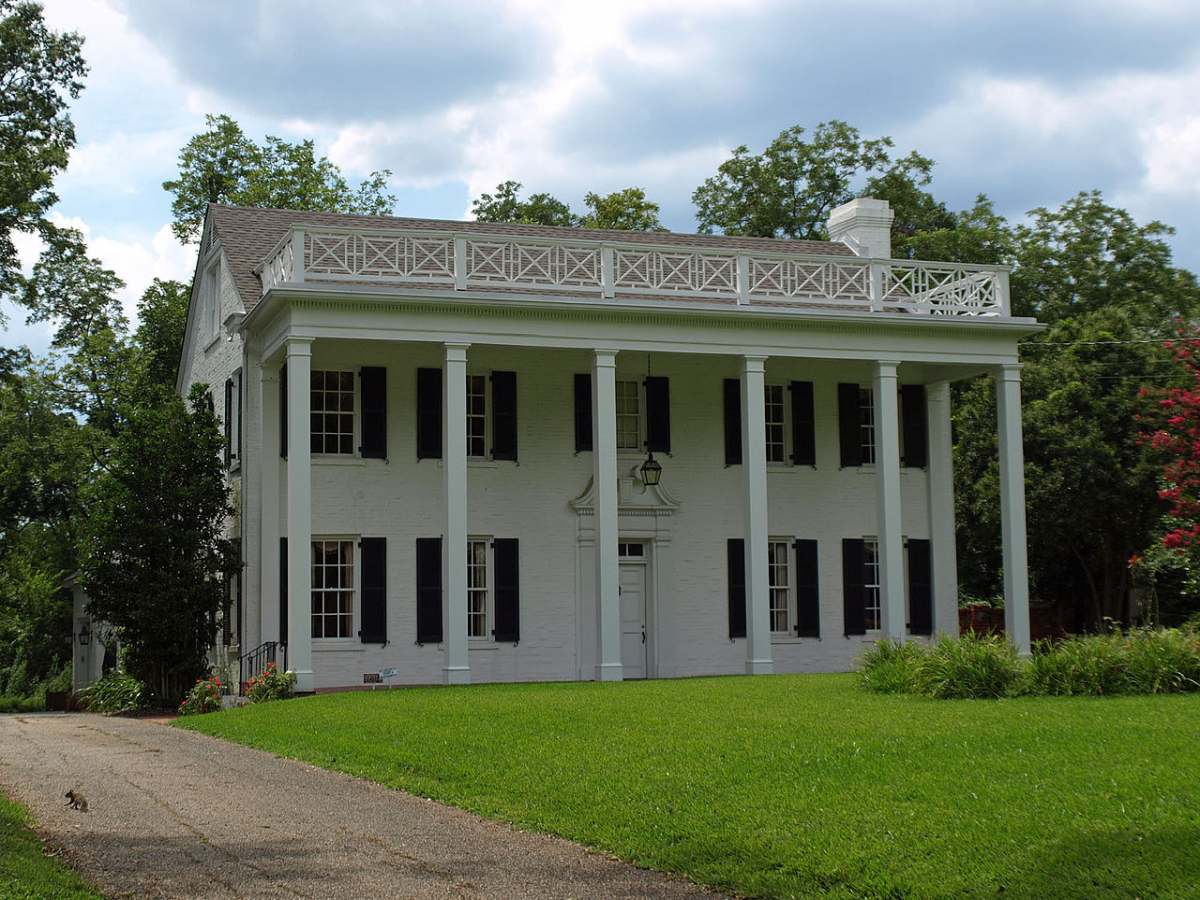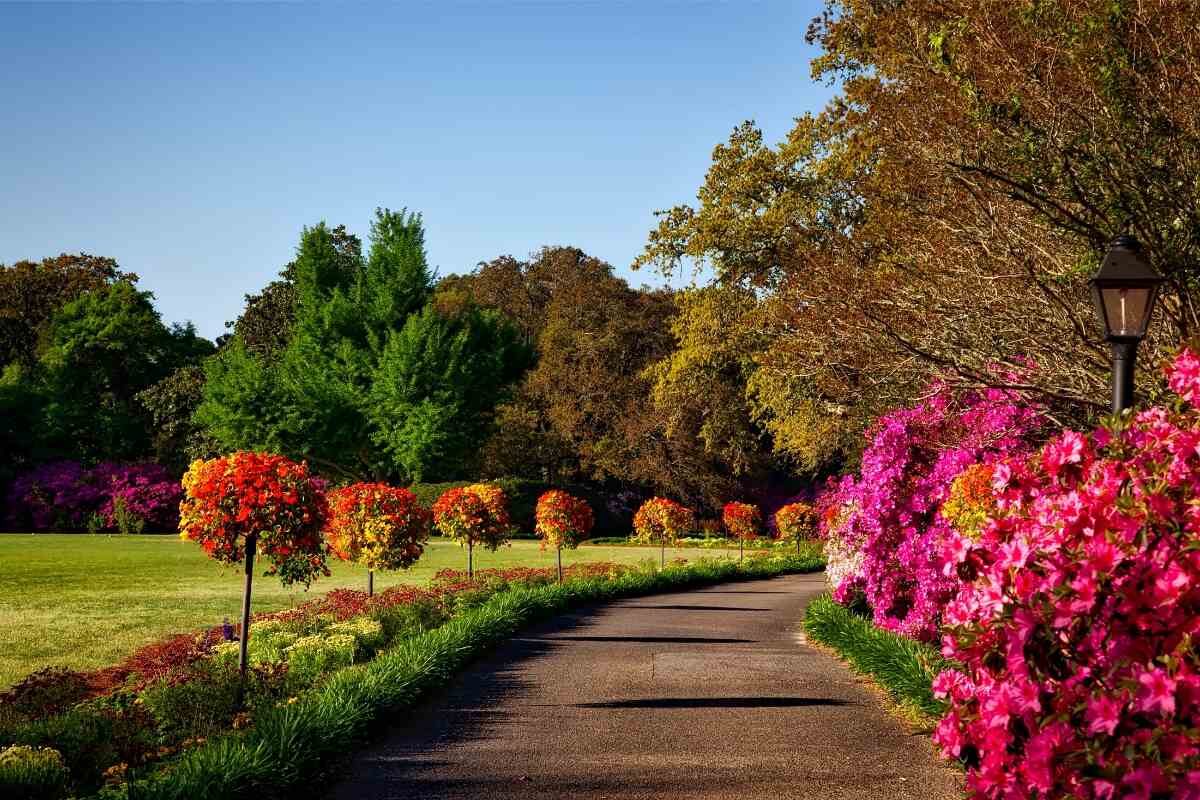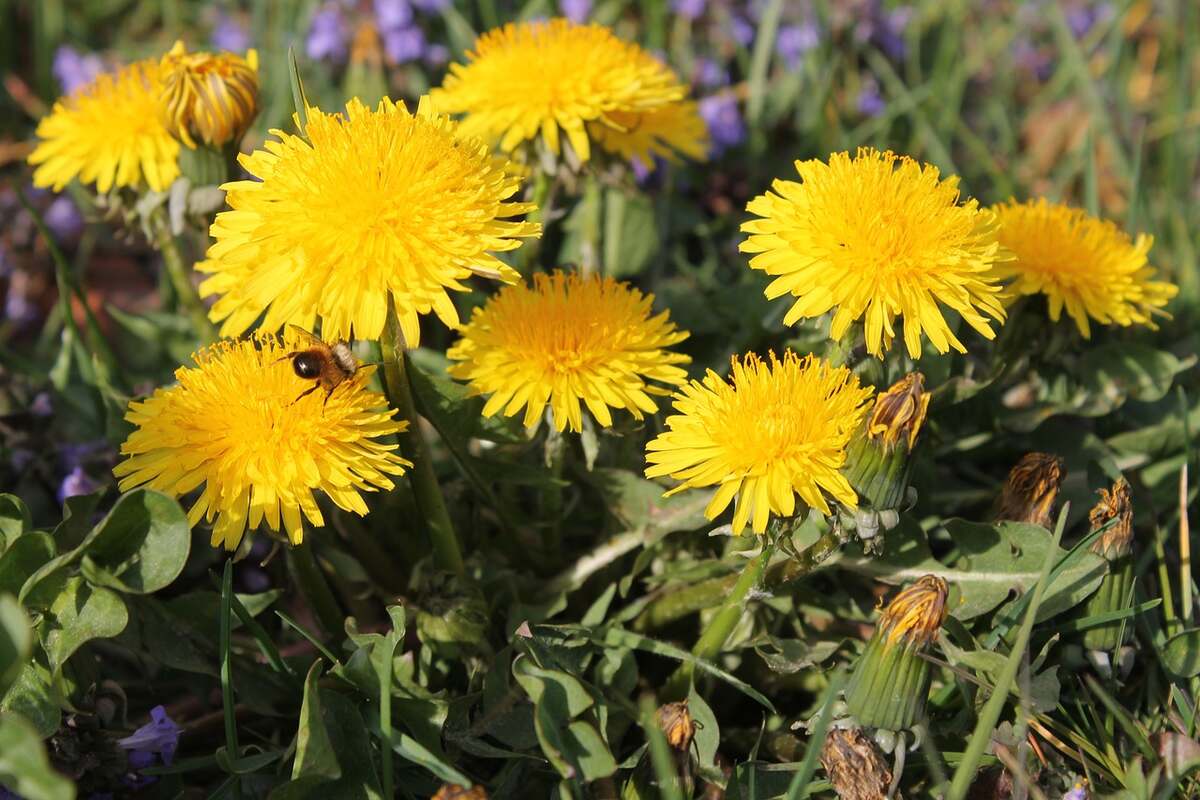
No matter where you live in Alabama, weeds are an unavoidable reality. For the most part, these pesky plants are simply an annoyance, but if you’re not careful, they can quickly overtake your well-tended lawn and garden. To give you the upper hand, here’s a rundown of some of the most common Alabama weeds to help you identify and manage them.
Nutgrass (Cyperus rotundus)
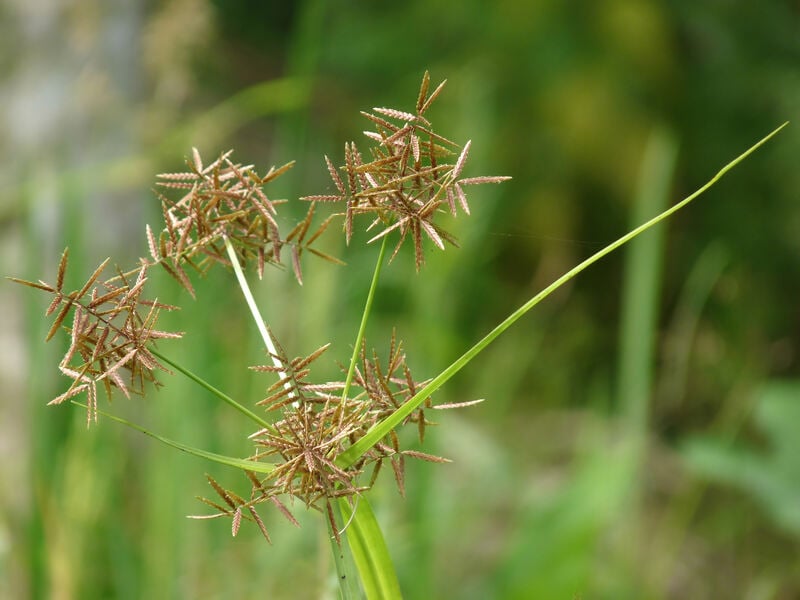
Nutgrass, otherwise known as nutsedge, is one of the most annoying and irritating weeds found in Alabama. With its upright triangular branching stems, it can quickly take over your garden or lawn.
Young plants usually appear in spring from underground tubers, and they can grow anywhere from full-sun areas to the more shaded ones. On top of that, they produce nut-like tubers that can break off into different plants if you don’t remove them properly.
There are two main varieties of nutgrass found in Alabama: yellow and purple. Yellow nutsedge stands above 18 inches tall, while the purple one is usually shorter, below 6-8 inches. Additionally, sedges usually display some flowers in the form of bumpy spikelets.
How to Deal with Nutgrass:
As you can imagine, nutgrass is quite hard to get rid of, but there are a few ways to battle it.
- Mechanical Control: Typically, pulling out the nutgrass from your lawn by hand is the best choice. Doing it before they have grown too many leaves or created more tubers can help weaken the tuber and eventually kill it.
Digging: If, unfortunately, the infestation is too large, you can try digging at least 10 inches deep and 10 inches further into the infested area. This should remove the whole root system, and you can fill the gaps with sod or grass seed.
- Chemical Control: Typically, it is not necessary to use herbicides for nutgrass. But if the infestation is really out of proportion, you can use an herbicide containing Halosulfuron Methyl, which is an effective chemical option. Please read the product’s directions carefully before applying it, or hire a weed control pro to apply it for you.
White Clover (Trifolium repens)
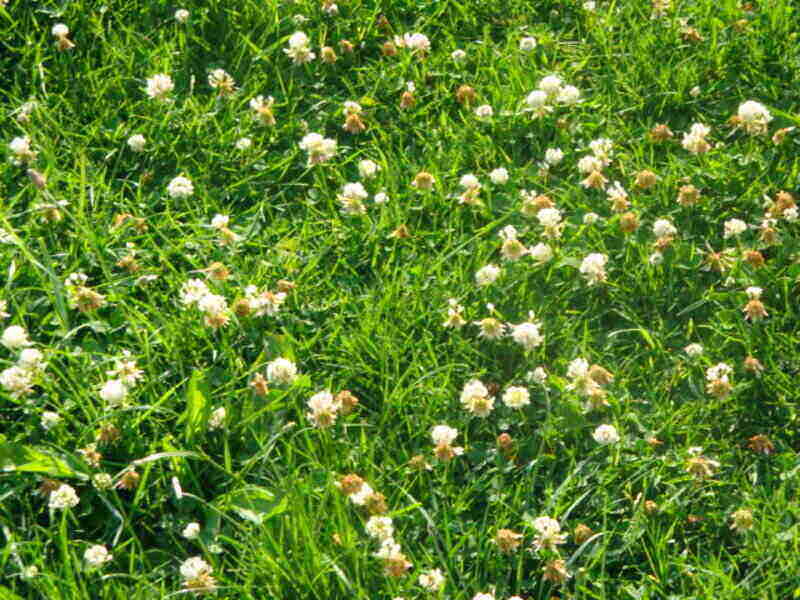
White clover is a common perennial weed, and it can be found in Alabama’s meadows and pastures. It can be identified by its bright white flower heads composed of several florets, and though it’s considered an invasive weed that can spread quickly if not controlled, it’s also known as a beneficial plant in pastures.
White clover fixes nitrogen in the soil, making it great for alternative clover lawns that provide all-natural fertilizer. However, if you have a traditional grass lawn, white clover as a weed can quickly become too much.
How to Deal with White Clover:
- Mechanical Control: To fight white clover, the first and often best method is to pull it out. It’s a simple yet effective way to control the weed in small patches, but it would require time and patience.
- Chemical Control: Herbicides containing Dicamba, MCPP, and 2,4-D can also help control white clover. These chemicals may interfere with other plants, including your grass, so it’s always better to look for natural solutions before resorting to chemical treatment.
Chickweed (Stellaria media)
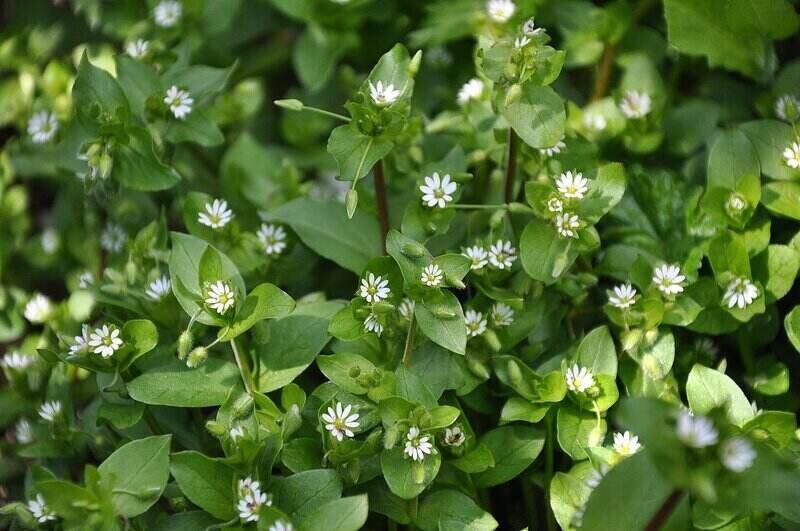
You’ve probably seen chickweed around your yard or in your garden. It usually grows low and is easily identified by its small, almost star-shaped white flowers and opposite leaves. You may also notice a single line of hairs along one side of its stalk. This fast-growing annual weed usually appears during the colder months and can, if unchecked, spread rapidly and take over your garden.
How to Deal with Chickweed:
Chickweed is generally an easy one to fight off.
- Mechanical Control: Chickweed is one of the easier weeds to remove manually—it can usually be pulled quite easily. Make sure to pull up all of the roots.
- Chemical Control: Spread pre-emergent herbicides in the fall to keep chickweed seeds from germinating. Spot-treat existing weeds with post-emergent herbicides in winter. Multiple applications will probably be needed to eliminate chickweed completely.
Annual Bluegrass (Poa annua)
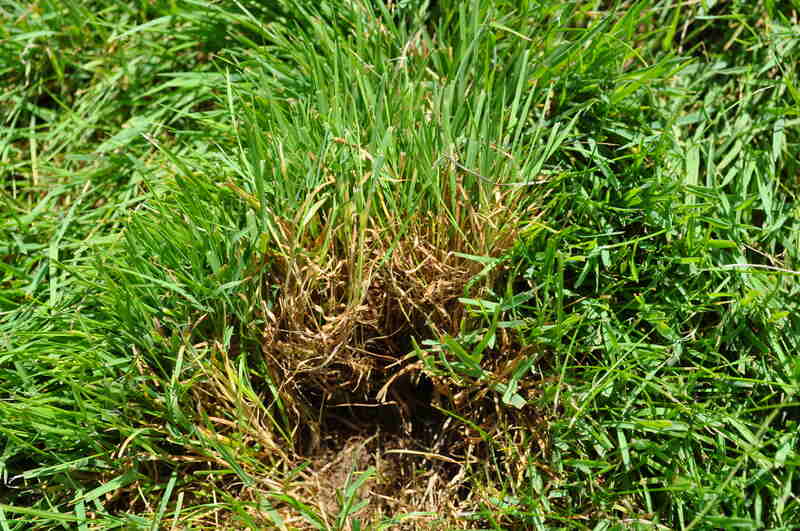
Annual bluegrass is a common weed in Alabama, and it’s especially bothersome for golf courses and home lawns. Not only can it compete with other plants by means of “smothering,” but it can also cause thatch buildup, which blocks healthy soil moisture and oxygen.
Annual bluegrass features a fibrous root system and bright green leaves with the ability to spread and reproduce at a fast rate. It tends to appear in late fall and grow a maximum of 10 inches, though usually, it’s much shorter. If you look closer, you may notice triangular panicles with small spikelets.
How to Deal with Annual Bluegrass:
Unfortunately, getting rid of annual bluegrass is not an easy task, and it’s often better to start controlling it with preventive methods.
- Mechanical Control: Just like with most other weeds, you can pull up annual bluegrass manually, though it can be quite a frustrating task. You can use a trowel or some other type of shovel to help with the process. Make sure to get all of the roots.
- Chemical Control: If the weed has become too much for manual removal, applying chemical herbicides is an option. There is a wide array of post-emergent and pre-emergent herbicides out there that work on annual bluegrass. Follow the product instructions carefully.
*Note: Try to use herbicides with different modes of action to avoid herbicide resistance. Typically, pre-emergent herbicides are used in late summer or early fall, and certain products will need water or rain to activate them.
Dandelions (Taraxacum)
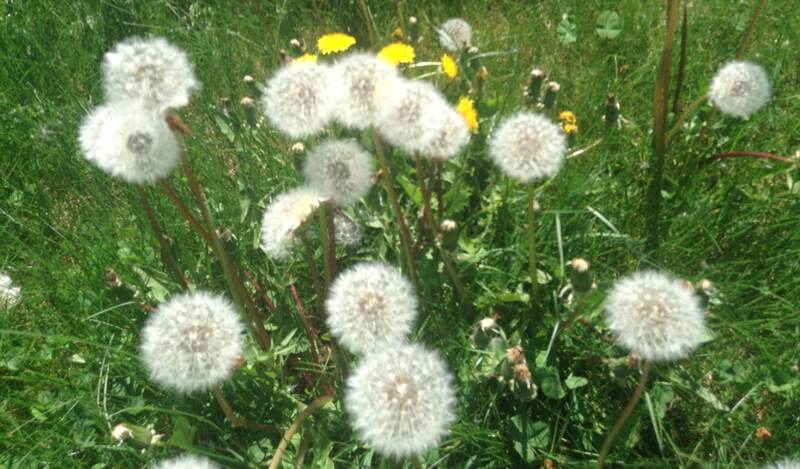
Though some people prize dandelions for their benefits, they can be a big problem for home gardeners and golf courses. Being a rather persistent weed, dandelions are easily recognized by their yellow flowers and wispy white seedheads.
When mature, dandelions’ fluffy white tufts of seeds survive to spread even further. In addition to its flowers, it has thick taproots that can regenerate new dandelions if the roots are not removed properly.
How to Deal with Dandelions:
As mentioned, dandelions are generally quite persistent and have a strong root system that can reach up to 10 inches deep. To get rid of dandelions, follow these methods.
- Mechanical Control: You can use a weeding knife to dig around the base of the weed and remove as much of the taproot as possible. Then, gently pull the root with your fingers and remove it.
- Chemical Control: If the taproot is too deep to remove by hand, your best option would be to spray herbicide directly on the hole from which the dandelion came.
Word of Caution: A nonselective herbicide, like glyphosate, is especially tricky to use since it kills almost all green plants, so be careful when using it. Also, always read and follow the herbicide’s instructions before applying it.
Crabgrass (Digitaria)
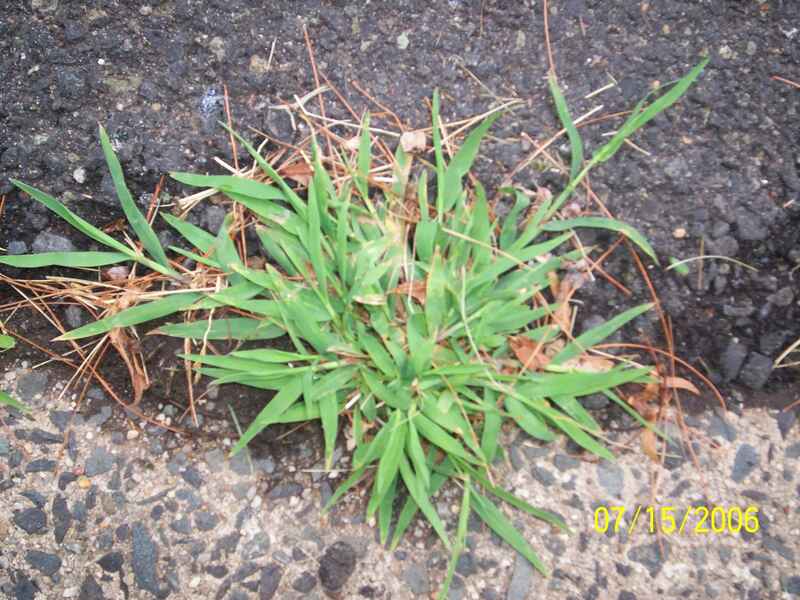
Crabgrass is an annual weed found in Alabama gardens and lawns. It is easily recognizable due to its fine texture, pale yellow-green color, and wiry stems. It is an opportunistic grass, and it will take over your garden by forming dense mats of very fine leaves. Even though it will die off by mid to late fall, it can cause considerable damage.
How to Deal with Crabgrass:
The good news is that there are a few ways to reduce its spread and effects in and around your property.
- Mechanical Control: Hand pulling and digging should be the first step, as it can help reduce the number of mature plants. You should water the soil first to help get the entire root out. Note that you should only remove young crabgrass plants since older ones tend to spread their seeds quickly.
- Chemical Control: Using a pre-emergent herbicide in late winter or early spring will help prevent crabgrass from sprouting the next year. However, pre-emergent herbicides will also inhibit the germination of lawn grass seed, so wait at least two months before overseeding the lawn if you apply pre-emergents.
Bindweed (Convolvulus)
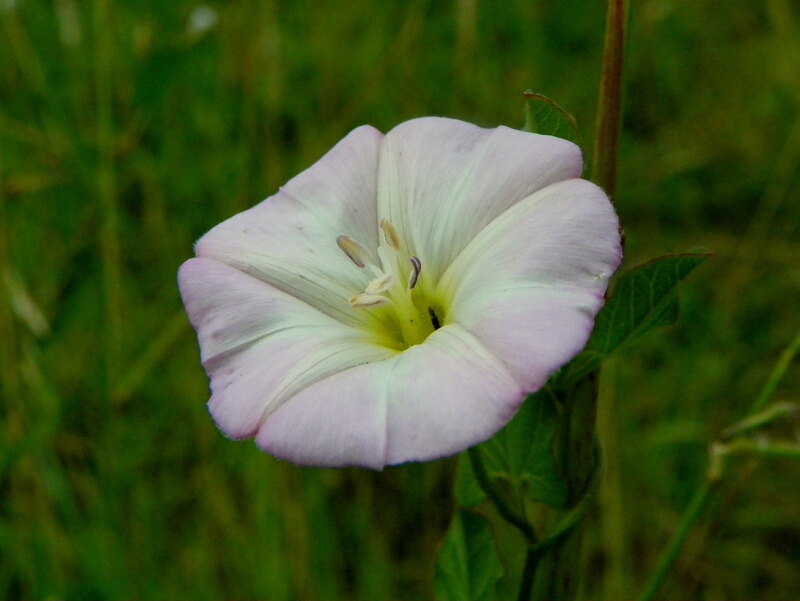
Among the most common weeds in Alabama, you’ll find bindweed. It is a vining weed that has been around for many years and grows from an extensive root system. Recognizable by its trumpet-shaped flowers, it can quickly smother other plants and be a nuisance in gardens.
How to Deal with Bindweed:
As with any other weed, controlling bindweed takes some dedication and patience.
- Mechanical Control: Unfortunately, hand-pulling and digging with a trowel can be a difficult and lengthy task, as the root system tends to spread as well as break and fragment easily.
- Chemical Control: Instead, using herbicides such as glyphosate can be effective. Post-emergent products are best used when the weeds are flowering, but you should apply them to a weed-only area, away from desirable plants. Multiple applications may be necessary due to the particular shape of bindweed’s leaves and stems, which form an effective barrier to herbicides.
Musk Thistle (Carduus nutans)
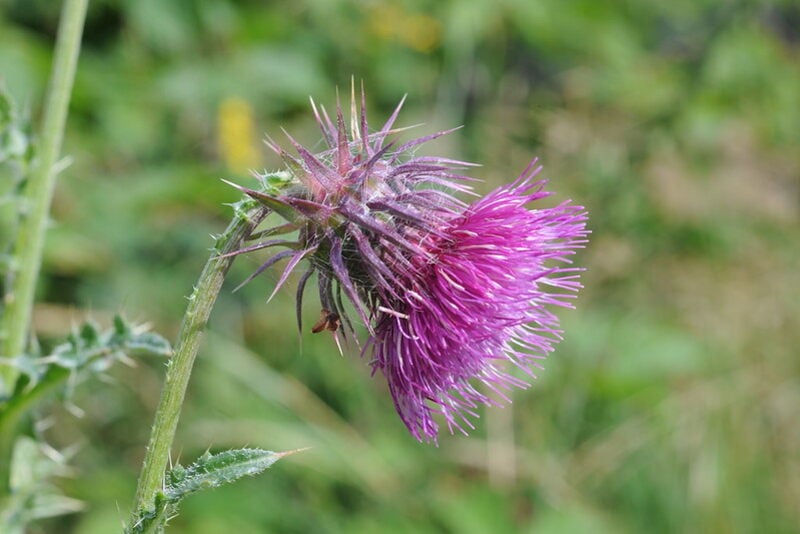
You won’t miss it! Easily spotted in Alabama’s pastures and roadsides, musk thistle grows up to 3 feet tall and is covered with spiny purple thorns. Leaves vary in shape but are always spiny-toothed. Look for small purple flowers on the upper stems. It’ll spread quickly if you don’t keep it in check, competing with your favorite plants for nutrients.
How to Deal with Musk Thistle:
- Mechanical Control: It’s hard to get rid of these guys. Their deep root networks regenerate if only partially disrupted, so it’s tough to remove them manually. If you’ve got a small infestation, hoes and trowels are worth a try, but it’s not always the best approach. To get the best results, try pulling them out when they’ve bolted (sprouted leaves and stems) just before they flower.
Cutting the taproot with a shovel three or four inches below the soil is a great way to prevent it from spreading and should get rid of it eventually.
- Chemical Control: It’s time to get chemical if cutting the roots and manually pulling musk thistle isn’t doing the trick. Chaparral and Cimarron Plus are often great go-to herbicides for controlling this pesky plant. Keep in mind, though, timing is key. Apply these solutions when the thistle is in a rosette in late winter or early spring for best results.
Waiting too long can make your herbicide less effective, and that means faded productivity for your grass. Thistles use the soil’s precious nutrients for themselves and block the sun from reaching your desirable plants.
Buckhorn Plantain (Plantago lanceolata)
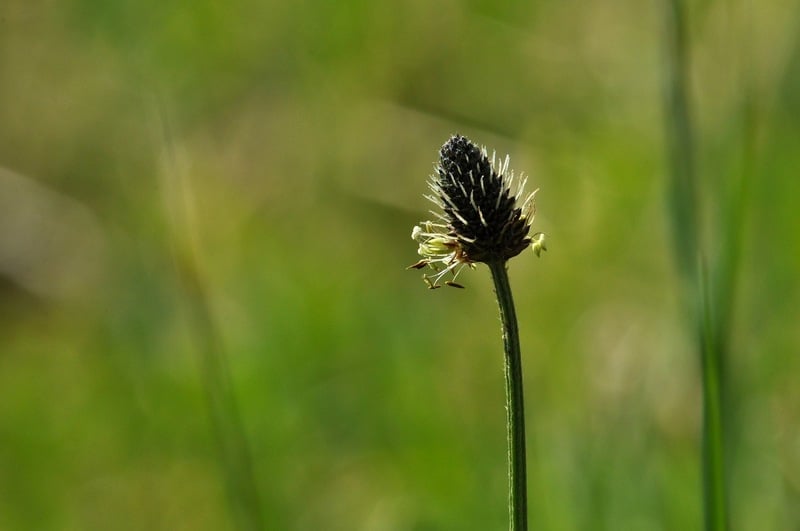
Even though it’s not a toxic plant, you definitely don’t want to mess around with buckhorn plantain, also known as English plantain. It’s a cool-season perennial that loves Alabama’s climate, growing up to a couple of feet tall and forming a dense, grassy rosette with lanceolate leaves two to twelve inches long.
Its white-to-brown flowers form little capsules, each holding two small, black boat-shaped seeds. Not only does it spread more quickly than other weeds, but its hardy taproot also becomes drought-resistant. So, it’s important to get rid of it as soon as you spot it on your lawn, park, pasture, or roadside.
How to Deal with Buckhorn Plantain:
To keep your pasture or lawn from becoming overrun with these troublesome plants, it’s best to act immediately.
- Mechanical Control: Not ideal, but sometimes possible. Weed-pulling tools, such as a Dutch hoe, can be used to pluck out buckhorn plantain, but as the plant establishes itself, it gets harder and harder to get a good grip on the roots.
- Chemical Control: Spot-treating buckhorn plantain with a chemical herbicide is the best way to remove it quickly. Select an herbicide containing 2,4-D ester for best results.
*Note: The best time to spray for buckhorn plantain is in November. However, if you don’t want to spray, try to remove them manually from February through April.
Common Purslane (Portulaca oleracea)
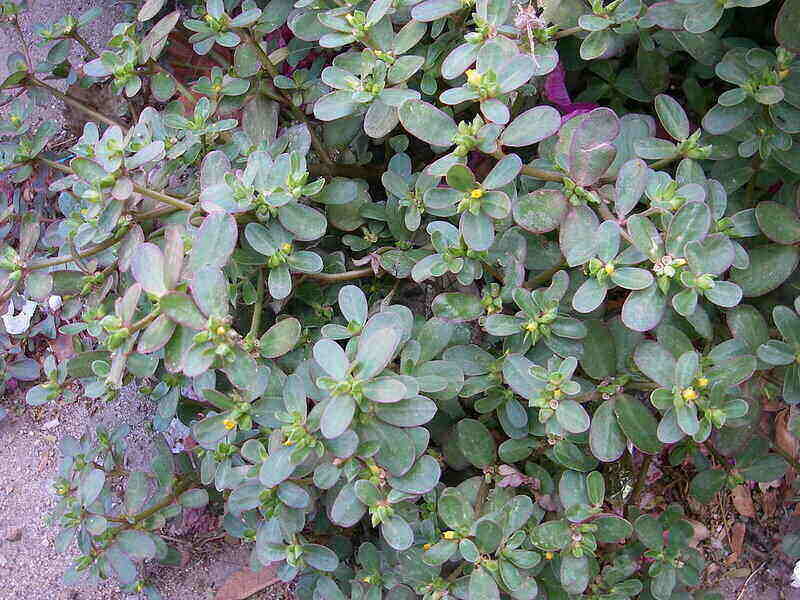
Common purslane, or wild portulaca, loves nothing better than taking over sections of your yard. It’s a summer annual broadleaf weed that always comes back stronger after you think it’s gone.
This glossy green succulent stores moisture in its fleshy leaves, and it can be spotted in your planting beds and around the edges of your turfgrass. Even worse, it teams up with other aggressive invaders, such as crabgrass and spotted spurge.
How to Deal with Common Purslane:
- Mechanical Control: Pulling up the entire weed, root included, is necessary to get rid of it. Make sure you get as much of the root out as you can. This can be tough since it re-roots itself from its stems and leaves, so you must be persistent.
- Chemical Control: Sometimes, the chemical route is the best weed control option for common purslane. Pre-emergent herbicides work best if applied in late winter or early spring. These usually contain active ingredients like 2,4-D, Mecoprop, and Dicamba.
For already growing common purslane, you can use post-emergent herbicides such as Tenacity. The ideal time for application in Alabama is between October and November when the weed is actively growing. For the best results, do it in the morning.
Weed Control Management Tips for Alabama
Truly getting rid of problem weeds in your yard is no easy task, but with the right knowledge and management, you can remain in control. One key point to remember with weed control is that prevention is much, much easier than curing. Here are some tips for Alabama lawn owners.
1. Know your weeds: Weed identification can feel daunting, but recognizing and understanding which weed you’re fighting makes the management process much simpler and more effective.
2. Timing is everything: The sooner you attack the problem, the more likely you are to see success with a weed-free lawn.
3. Know your herbicides: Always read the labels of any herbicide product you plan to use on your lawn very carefully and follow all safety guidelines provided.
4. Know the best time to apply herbicides in Alabama
It’s not as simple as you’d think when it comes to common lawn weeds. Keeping up with a lawn care schedule will help you stay on top of your lawn care routine and remember key dates when you should use herbicides.
- Early March: Apply pre-emergent herbicide at this time to prevent summer weeds from germinating.
- Mid-September to October: Use pre-emergent herbicide to prevent annual winter weeds from re-establishing.
- All Year Round: Spot treat existing weeds with post-emergent herbicides. Don’t spray herbicides all over your lawn and garden, or you’ll risk hurting the desirable plants.
*Note: Your Bermudagrass will not be so happy if you apply herbicides improperly, so be sure to use the correct type of herbicide when the right time has come.
5. Lawn care maintenance: Keeping your lawn healthy and strong with regular watering, mowing, and fertilization will create an environment where weeds have a hard time taking root.
Feeding the grass with a fertilizer with higher nitrogen content will support your lawn’s growth and help reduce the weed’s spread. Be sure to mow the lawn when it’s dry, and set the mower blades to 3 inches or higher.
6. Mulching your flower beds: Adding mulch around your landscaping beds helps insulate the soil and acts as a mechanical barrier that will reduce the germination of many annual and perennial weed seeds.
7. Choose the right control methods: Always use the best method for the specific weed you’re dealing with, whether it be mechanical control or chemical control. Make sure to read up on a plant’s control options, as some weeds are resistant to certain herbicides.
If an army of weeds is overwhelming you and your lawn, contact an Alabama lawn care pro with the experience and expertise to tackle even the most difficult weed problems.
FAQ About Weed Control in Alabama
Well, there are plenty of them. It seems like no matter where you go in the state, you are going to find annoying weeds popping up. From crabgrass and dandelions to chickweed and thistle, there’s certainly no shortage of them. And if you don’t stay on top of things, they’ll take over your garden in no time.
You’ll need to keep an eye out for any unwelcome plants that are growing amongst your desirable plants. Different weeds can be identified by several features, including:
• Shape and size of the leaves
• Color of flowers
• Appearance of fruits/seeds
• Root structure
Believe it or not, certain types of weeds have great benefits for the environment, including:
• Feeding insects and providing shelter
• Improving soil nourishment and texture
• Supplying natural nitrogen to the soil
• Providing forage and habitat for wildlife
• Depending on the type of weed, it can also be used for medicinal and culinary purposes
In fact, some beautiful Alabama native plants that could make great additions to your landscape are considered weeds. Maybe it’s time to look at them in a different light and consider incorporating them into your garden!
The relationship between weeds and gardeners is largely adversarial, as weed growth can be incredibly difficult to control and even dangerous for crops, gardens, and livestock. And let’s not forget about the aesthetic side of it. A well-groomed lawn is often more attractive than one overrun with weeds.
Bermudagrass might be the most common turf in Alabama, but if you’re looking for serious resistance to weeds, you can’t go wrong with Zoysiagrass. With its aggressive nature, it is one of the best grass seeds you can get in Alabama, easily choking out weeds and disease. As a bonus, it is also resistant to insects, meaning you don’t have to worry about them ruining your lovely lawn.
Weeds thrive in Alabama’s warm and humid climate. Weed seeds remain dormant in winter and come to life in spring and summer. Alabama’s USDA Hardiness Zone ranges from zone 7a in Northern Alabama to 9a in Southern Alabama, meaning it’s got a mild climate where weed growth is enabled year-round.
In addition, soils in the area tend to be acidic, profiting weeds like oxalis and clover that prefer poor-draining soils.
Final Thoughts
Alabama’s mild, humid climate and frequent rainfall can make it a hotbed for weeds. Knowing what type you’re dealing with is key to controlling them. From preventative measures to manual and herbicidal treatments, there are plenty of ways to make your lawn look its best. Just remember to read the instructions and take precautions first.
And if you get lost in the weeds, LawnStarter can help you find a lawn care pro in Alabama to help you find your way out. Whether you’re in Montgomery, Birmingham, Huntsville, Mobile, or anywhere else in the Heart of Dixie, there’s help for your weed woes.
Main Photo Credit: Pixabay
